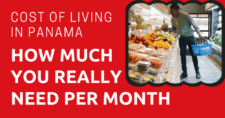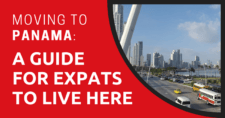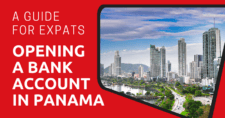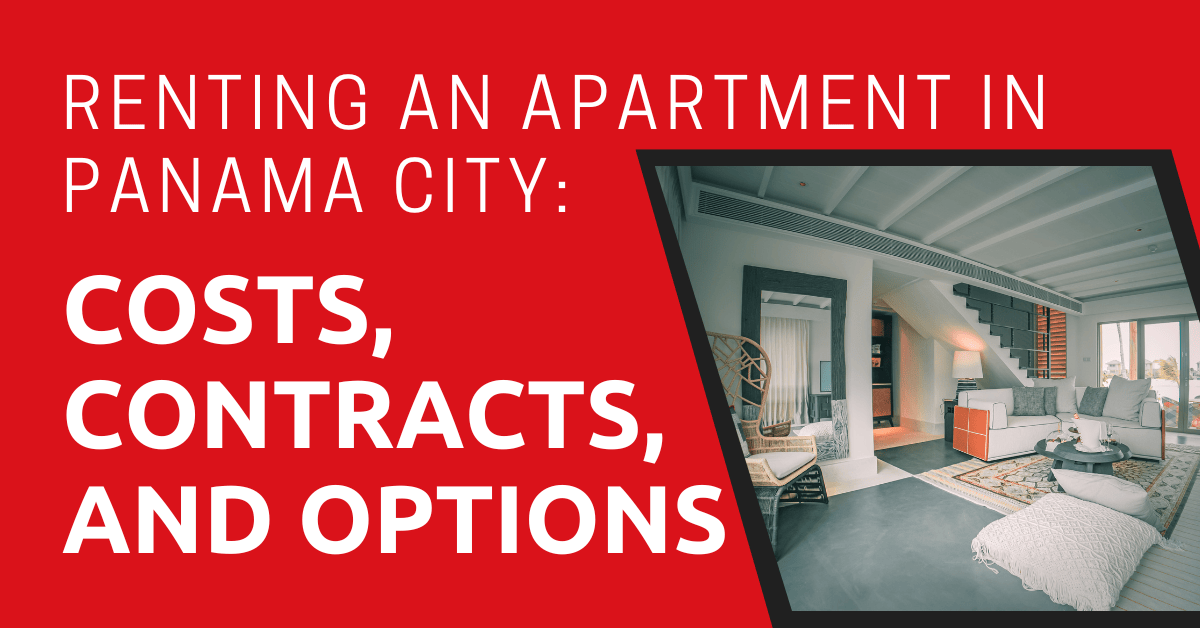
The rental market in Panama City is steadily growing, offering an increasing variety of properties with more luxurious amenities. Apartments are available for every preference and budget, whether you’re seeking a studio, a penthouse, or a three-bedroom condo for a family.
Panama’s capital boasts several attractive neighborhoods for expats, each with its own personality and offerings. Whether you’re drawn to the bustling nightlife of El Cangrejo or the peaceful waterfront views of Costa del Este, Panama City has something for everyone.
Renting an apartment in Panama City is a straightforward process. In this guide, you’ll discover the step-by-step knowledge you need to sign the contract for your dream apartment.
This article will take approximately 17 minutes to read. Don't have the time right now? No worries. You can email the ad-free version of the article to yourself and read it later!
Disclaimer: This article may include links to products or services offered by ExpatDen’s partners, which give us commissions when you click on them. Although this may influence how they appear in the text, we only recommend solutions that we would use in your situation. Read more in our Advertising Disclosure.
Contents
Understanding the Panama City Rental Market
Most neighborhoods in the city center feature a mix of old and modern buildings. The newer high-rises boast eye-catching features like pools, workout rooms, playgrounds for children, barbecue areas, and concierge services.
Panama City apartments usually have one to three bedrooms, with studios also being popular. Apartments with four or more bedrooms exist but are harder to find and significantly more expensive.
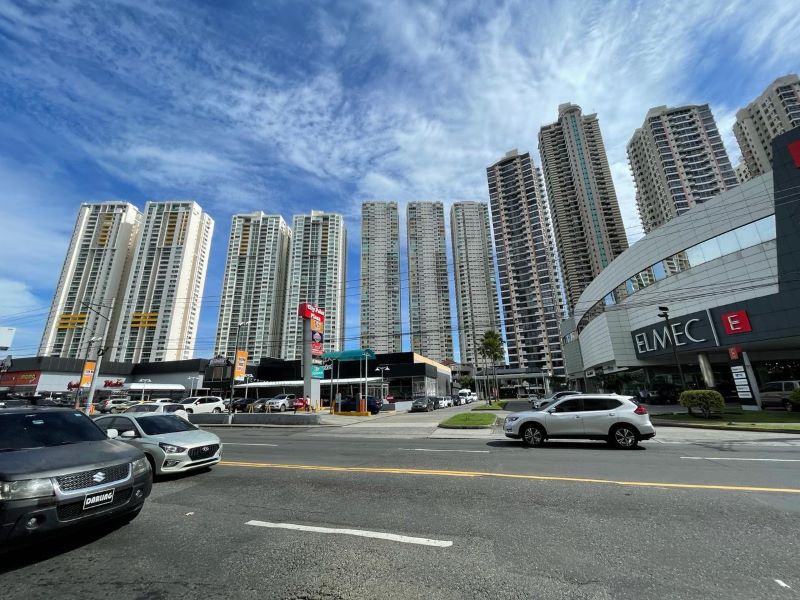
Many apartments include a small service room, designed for live-in housekeepers and not included in the total bedroom count.
Apartment dimensions vary by price and construction year. A bigger budget affords more square meterage. Older apartments are more spacious, typically ranging from 80 to 160 square meters regardless of the number of bedrooms.
However, they don’t offer the special amenities found in newer properties.
The average dimensions for modern apartments are as follows: 45 to 100 square meters for a studio or one-bedroom, 60 to 100 square meters for two bedrooms, and 80 to 150 square meters for three bedrooms.
Rental apartments are advertised as vacio (unfurnished, without electrical appliances), línea blanca (with air conditioning, washer and dryer, fridge, and stove/oven installed), and amoblado (fully furnished).
Línea blanca is most common, but all three types of apartments are easy to find. Furnished apartments are more expensive but are a convenient choice, especially if you’re moving to Panama for the first time and aren’t shipping furniture.
Rental Costs in Panama City
Apartment rental prices are influenced by neighborhood, size, furnishings, amenities, and construction year. The closer you live to the city center and real estate “hotspots,” the more you’ll need to budget for rent.
When I say “hotspots,” I’m referring to upscale neighborhoods in high demand, such as:
- Avenida Balboa
- Punta Pacífica
- Punta Paitilla
- Coco del Mar
- Costa del Este
- Santa María
- Albrook
- Clayton
- Marbella
A two-bedroom furnished apartment in these upper-class areas averages US$1,200 to US$1,600 a month. However, there are also buildings with stunning architectural work where apartments rent for much more.
As I said, there are apartments available at every price point in Panama City. Rental costs can vary greatly, even within the same neighborhood.
You could rent a similar apartment with the same amenities for US$800 to US$1,300 a month in a middle-class neighborhood like Obarrio, El Cangrejo, Bella Vista, San Francisco, or Condado del Rey.
If you find an apartment you like but it’s a bit above your price range, try negotiating a lower price with the owner or real estate agent. Many landlords are willing to reduce the price by US$50 or more, especially if their apartment has been vacant for a while.
I live in Bella Vista, paying US$700 a month for an 80-square-meter, 2-bedroom apartment with a bay view. I love living here for the convenience: I’m a three-minute walk from the Metro, five minutes from the park, and ten minutes from the bayfront.
Choosing a Neighborhood
The first step in your apartment search should be to identify two or three neighborhoods where you’d be happy living. Consider the following factors when browsing different areas:
- Transportation options: If you don’t have a car, check for a Metro station in each neighborhood you’re considering. Without one, you’ll need to rely on buses or cabs. Living close to the city center and Metro lines saves time and money if you plan to live without a car.
- Proximity to work and schools: Ensure each neighborhood is within a reasonable commuting distance from your work and your children’s school, if you have a family. Factor in longer commute times during rush hours. Being close to major thoroughfares (Avenida Balboa, Vía España, Avenida Transistmica, Calle 50, etc.) means more traffic jams.
- Safety: Online information about the safest and least safe neighborhoods in Panama City is available. The expat-popular neighborhoods I mentioned earlier are among the city’s safest areas, with very low crime rates. They are suitable for raising a family. Once you’ve narrowed down your search to specific apartments, check if the buildings have 24/7 security. Most do.
- Convenience: Consider what you need nearby. Clinics, hospitals, veterinarians, supermarkets, shopping malls, playgrounds, parks, restaurants, nightlife? Write a list and ensure each potential neighborhood has the amenities you can’t live without.
Now, let’s discuss a few neighborhoods I mentioned earlier and what makes them ideal for expats in Panama.
Punta Pacífica
Punta Pacifica is an upper-middle to upper-class neighborhood in the heart of Panama City, situated on a peninsula with fantastic sea views.
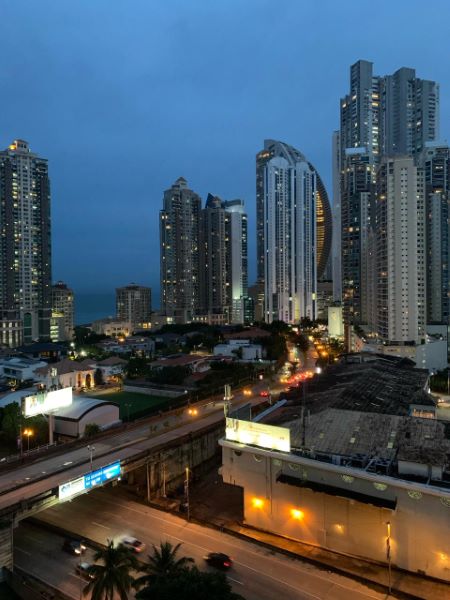
It’s a quiet, safe, mostly residential area, walkable with many restaurants, shops, and the famous J.W. Marriott hotel. Close to Multiplaza mall and two private hospitals – The Panama Clinic and Hospital Punta Pacífica.
Punta Pacifica is near major thoroughfares like the Corredor Sur and Vía Israel, offering easy access to the rest of the city.
El Cangrejo
El Cangrejo is a lively neighborhood, popular with expats for its trendy restaurants, bars, and cafés.
Named “the crab” for its street layout, El Cangrejo is a safe middle- to upper-middle-class area with a mix of old and modern apartment buildings.
It’s home to the family-friendly Parque Andrés Bello and the Vía Argentina, lined with restaurants, cafés, pubs, and bars with live music.
Costa del Este
Situated 20 minutes to the east of the city center, Costa del Este is a newer community that was built in the 1990s. The neighborhood has a suburban feel with wide, palm tree-lined boulevards and walking paths.
Many multinational corporations have founded regional headquarters in Costa del Este, and an assortment of luxurious apartment buildings provide housing for their international employees. This is a “complete” neighborhood with supermarkets, a shopping mall, restaurants, shops, parks, clinics, pet care centers, and everything else a person could need.
Bella Vista
Bella Vista is specifically the part between the Santo Tomás Metro station and Parque Urraca. It is close to expensive neighborhoods like Avenida Balboa and Marbella, yet affordable.
Bella Vista features Spanish-colonial buildings, older apartments, and new towers with sea views and impressive amenities.
This part of Bella Vista has supermarkets (El Rey and Riba Smith), churches, a synagogue, clinics, schools, easy Metro access, and is a short walk from the Cinta Costera.
Finding a Rental
Most people find rental apartments in Panama City through real estate websites, social media, and classified ads sites.
These sites provide complete information on the unit and building, photos, and contact information for the owner or real estate agent.
Here is a list of reputable sites to get you started on your apartment hunt:
FACEBOOK AND INSTAGRAM PAGES
- Alquiler Apartamentos Panamá – Instagram
- Alquileres en Panamá – Instagram
- Facebook Marketplace
- Young Expats In Panama – Facebook
- Expats In Panama – Facebook
CLASSIFIED ADS
Using a Real Estate Agent
If you would rather have professional assistance, you can hire a real estate agent to help you find an apartment. These agents can be found on any of the real estate websites listed below.
During your meeting with the agent, describe your ideal living space in as much detail as possible.
Specify the apartment you have in mind, including the number of bedrooms, whether you prefer furnished or unfurnished or línea blanca, desired location, proximity to necessities like Metro stations or schools, preferred building amenities, and any other important details.
With this information, the agent can show you several apartment options suited to your preferences.
Once you have found an apartment you like, it is time to schedule an in-person visit.
Many landlords hire a real estate agent who will meet you at the building and give you a tour of the unit and any common spaces like social areas and workout rooms.
Real Estate Agent Fee
It is the owner’s responsibility to pay the agent; visits are 100% free for you as a potential tenant.
Questions to Ask
Before seeing the apartment, write down any questions you want to ask the owner or real estate agent. If there is something that wasn’t crystal clear in the ad or in your conversations with the landlord or agent, be sure to clarify it during the tour.
Here are a few questions you should ask when touring an apartment:
- What utilities are included in the rent?
- Who is responsible for coordinating and paying for maintenance and repairs?
- Is parking available, and is there an additional cost?
- Is the apartment pet-friendly? Are there any restrictions or fees for pets? (This is only relevant if you have a pet or think you want to get one.)
- How much notice is given before a rent increase?
- How much will I be asked to pay upon signing the contract?
- What items will be available for me to use? (Sheets, towels, kitchen utensils, etc.)
- I usually ask how much the previous tenants paid for electricity since light bills vary depending on the area of the city and even the building.
Moving In
When you move in, do a complete walk-through of the apartment to ensure everything is in order.
Turn on the air conditioners, run all the water taps, and check the fridge, stove, microwave, and any other appliances to see if they are working correctly. Double-check that all the furniture mentioned in the contract is where it should be.
You usually have about three to four days after moving in to notify the landlord if something is missing or not working right.
Rental Agreements
Let’s take a look at what you need to know before signing a rental contract in Panama.
Contract Duration
In Panama, rental contracts are typically written for a year with an optional renewal.
Security Deposit
Landlords usually ask for the first month’s rent plus a security deposit (equal to another month of rent) when you sign.
If the apartment is damage-free when the contract ends, the owner will reimburse you the deposit amount.
This is why it is essential that you take photos of any wear-and-tear in the apartment and send them to the landlord when you move in: You cannot be held accountable for damages that occurred before you lived there.
Repairs and Maintenance
Owners will sometimes subtract certain repairs and maintenance from the security deposit that is returned to you. They often do this to pay for cleaning of air conditioners, painting, fumigation, or furniture repairs.
Before agreeing to a rental contract, ask the landlord what costs you will be financially responsible for at the end of the contract period.
Discuss with the landlord who will be responsible for financing routine maintenance and repairs during the contract period. There is really no standard arrangement, and this varies from owner to owner.
In my case, my landlord pays for any repairs to the línea blanca (washer and dryer, fridge, stove, air conditioners, etc.), and I handle smaller tasks like cleaning the air conditioners, painting, and fixing issues with the plumbing and hot water heater.
Signing a Rental Contract
You can sign a rental contract in-person or virtually in Panama. There is no need for a lawyer or third person to be present.
The landlord will ask you for certain documents to verify your income and identity including:
- a bank statement
- an employment contract
- an ID card
Once the agreement is signed, it needs to be notarized by a Panamanian notary to be recognized as official.
A rental contract is a legally binding document in Panama, so you need to make sure you understand it completely before signing.
It will be written in Spanish, so if you’re not 100% fluent in Spanish, make sure to ask a Spanish-speaking person for help (this should not be the landlord, real estate agent, or anyone else who benefits financially from you signing the contract).
Utilities and Services
Landlords in Panama City usually cover the water bill, garbage collection, and maintenance fee, while tenants pay for electricity and internet. Gas for cooking is supplied by the building.
If the apartment you’re renting is línea blanca or furnished, the air conditioning will already be set up. There are two electrical providers in Panama: ENSA and Naturgy.
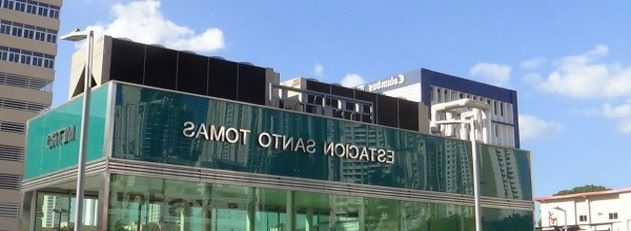
The companies work in different areas of the city, so you won’t have to choose a provider. When you move in, ask the landlord to have the account transferred to your name. The monthly bill can be paid by bank transfer or online with a card.
Air conditioning use has the greatest effect on the electricity bill. If you run the A/C at night and sparingly during the day, your light bill will probably fall between US$75 and US$200 a month, depending on the neighborhood and how many units are in your apartment.
If you use air conditioning constantly, you’ll be looking at a much higher light bill.
Internet
Installing internet is your responsibility.
The main internet companies in Panama are Cable & Wireless and Tigo. Both provide standalone internet plans as well as household packages that include internet, Cable TV, and a landline. You can schedule an appointment with either company via WhatsApp for an employee to install the modem in your apartment.
After that, you’ll receive monthly statements via email, which can be paid through bank deposit or online with a card.
Internet typically ranges from US$35 to US$50 monthly, based on the number of Megabits per second (Mbps).
Household packages vary from US$48 to US$60 monthly, depending on the Mbps and number of TV channels included.
Parking Space
If you have a car or are thinking about getting one, it’s a good idea to ask the owner or real estate agent to also show you the parking garage.
In Panama City, some parking garages are very narrow, which can lead to scratches or dents on your car, especially if it’s an SUV or larger vehicle.
If you’re worried about not being able to park comfortably, you might want to consider looking for a building with a more spacious parking garage.
Legal Considerations
To ensure a smooth renting experience, it’s important to be aware of various laws and common practices. Below are several policies you may encounter with your landlord or building administration:
- Subletting is not allowed in Panama. You can’t rent out any part of the apartment you’re leasing.
- If you leave before your lease ends, you’ll face penalties and won’t get your security deposit back.
- As a tenant, it’s your job to keep the apartment in good shape. Clean the air conditioners regularly and don’t make any changes to the apartment without asking the landlord first. When you move out, you have to return the apartment exactly as it was when you moved in.
- Landlords need to stay on top of administrative payments to avoid problems like having the gas shut off or restricted access to common areas. They also have to keep you informed about important things happening in the building, like water shut-offs or repairs.
- Before you move in, make sure to ask for a list of the building’s rules. Breaking these rules can result in fines. For example, if you park in visitor parking for longer than two hours, you could get fined US$50. Each building has its own set of rules, so it’s important to know them to avoid getting fined, which can range from US$20 to US$500 depending on the infraction.
- If you need to bring in large pieces of furniture, you’ll probably have to pay the building administration a fee of US$50 to US$200 to use the elevators.
- Each building has a schedule for when repairs are permitted, and you can’t make loud repairs outside of certain hours. Usually, repairs are allowed Monday through Friday, from 8 a.m. to 12 p.m. and 2 p.m. to 5 p.m. No repairs are allowed on weekends or holidays.
- If your apartment needs a minor repair and the landlord doesn’t respond on time, you can pay for it yourself and deduct the cost from your next rent payment. Just make sure to keep the receipt and send it to the landlord as proof.
Rental Options for Short Stays
Airbnb is the leading platform for short-term rentals in Panama, boasting hundreds of unique properties that offer greater comfort, convenience, and privacy compared to hotels.
Airbnb rentals are often more affordable and offer additional amenities, such as fully equipped kitchens. Full apartments can be rented on the platform for as little as US$50 to US$100 per night, many of which feature pools and are pet friendly.
One of the main upsides of Airbnb is that hosts frequently offer special discounts for week-long and month-long stays.
If you haven’t found a permanent rental by the time you arrive in Panama City, staying in an Airbnb during this transition period is a more affordable option than spending that time in a hotel.
Staying in Airbnbs is a great way to get a feel for what apartments in Panama City are like.
Nightly rates increase during holidays and important celebrations, such as Christmas, New Year, Carnival in February, Holy Week (Semana Santa), and independence celebrations throughout November.
Demand for short-term rentals is higher during these periods, so it’s a good idea to book several weeks before your trip.




